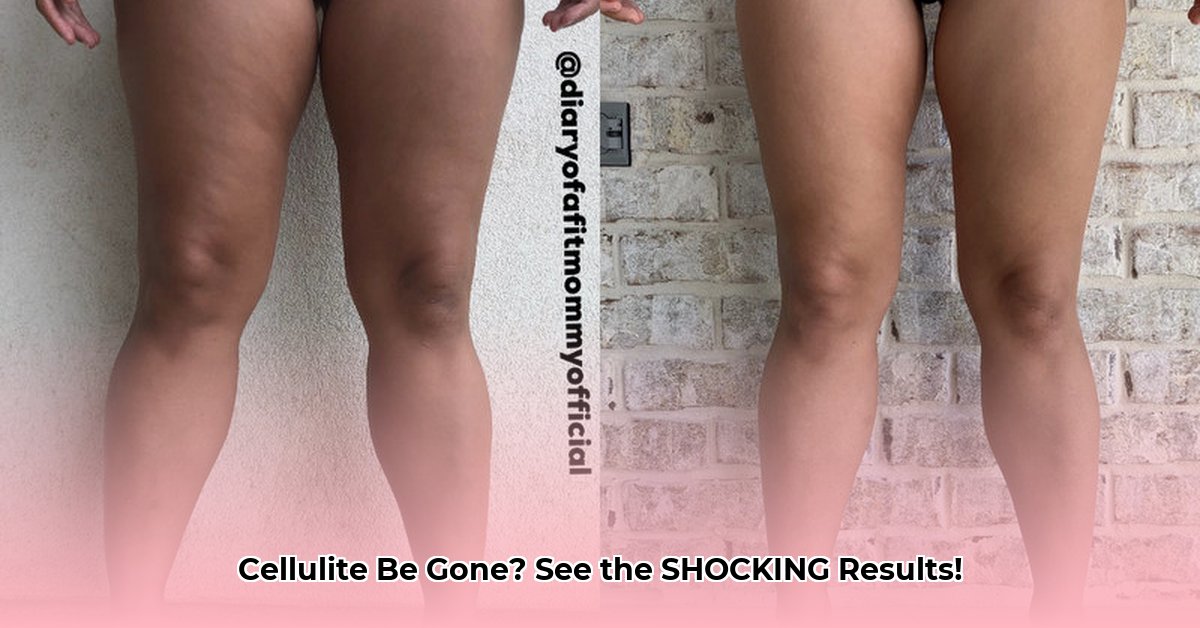
Understanding Cellulite and Weight Loss: Separating Fact from Fiction
Many people strive for smoother skin, often searching for a weight loss cellulite before and after solution. While weight loss can improve the appearance of cellulite, it's crucial to understand that it's not a guaranteed cure. Cellulite, that dimpled appearance, isn't simply excess fat. It's a complex interplay of factors, including fat distribution, connective tissue, and skin elasticity. Genetics, hormones, and age also play a significant role. So, while losing weight can certainly make cellulite less noticeable by reducing the fat layer, it doesn't address the underlying structural issues. The question isn't just can I lose this, but how can I best improve my skin's appearance?
What is Cellulite? A Deeper Look
Cellulite arises from a combination of factors. Fat pushes against the connective tissue beneath the skin. This connective tissue, weakening over time, allows fat to push through, creating the characteristic bumpy texture. Simultaneously, changes in skin elasticity contribute to the visible appearance of cellulite. It's this interplay of fat, connective tissue, and skin elasticity that makes for a complex problem demanding a multifaceted approach. Is weight a contributing factor? Absolutely; however, genetics and hormonal changes also play significant roles.
The Role of Weight Loss in Cellulite Reduction
Shedding excess weight can indeed improve the appearance of cellulite. As you lose fat, the underlying layer becomes thinner, reducing the prominence of those familiar bumps. However, it's important to manage expectations; weight loss alone won't eliminate cellulite entirely. Think of it like this: Losing weight is like removing some of the stuffing from a lumpy mattress—it makes it appear less lumpy, but the structure remains. A healthier weight contributes to better overall skin tone, making the dimpling less visible, but it is not a complete solution. What else contributes to long-term success?
Effective Cellulite Treatment Options: A Comprehensive Overview
Numerous treatments aim to reduce the appearance of cellulite, each with varying levels of invasiveness, cost, and effectiveness. Choosing the right approach depends on your individual needs, budget, and tolerance for potential side effects. Let's examine some popular options:
Minimally Invasive Procedures
- Acoustic Wave Therapy: This non-invasive treatment uses sound waves to stimulate collagen production and improve skin texture. Results vary, often requiring multiple sessions, and the cost is usually moderate.
- Endermologie®: This non-invasive technique employs massage to improve lymphatic drainage and skin contour. Several sessions are needed, and results may not be long-lasting. The cost is moderate.
- Ionithermie: This non-invasive method aims to improve lymphatic drainage. However, its effectiveness varies and results are typically temporary. The cost is also moderate.
More Invasive Procedures
- Subcision (e.g., Cellfina™): This FDA-cleared procedure involves breaking up the bands of connective tissue under the skin. While it can provide longer-lasting results, it's invasive, carries risks of bruising and scarring, and is typically expensive.
- Laser Treatments: Various laser technologies target fat cells and tighten skin. These can be effective but also carry risks of burns and changes in skin pigmentation. The cost is moderate to high, and effectiveness depends on the specific technology used.
Topical Treatments
- Topical Creams: These creams often contain ingredients like caffeine, retinol, or plant extracts. While convenient and relatively inexpensive, scientific evidence supporting their long-term effectiveness is limited.
Critical Note: Before-and-after photos often showcase dramatic results, but individual experiences vary substantially based on factors such as genetics, age, and skin type. Always maintain realistic expectations.
Your Personalized Action Plan: A Step-by-Step Guide
Ready to take control and improve your skin's appearance? Follow these steps:
- Consult a Dermatologist: A dermatologist can assess your individual needs, discuss your goals, and recommend appropriate treatments and lifestyle changes. This is the crucial first step towards understanding your options.
- Set Realistic Goals: Complete cellulite removal is unlikely for most. Aim for improvement, not perfection. What are your realistic aesthetic expectations?
- Prioritize a Healthy Lifestyle: Maintain a healthy weight through balanced nutrition and regular exercise. This positively impacts skin tone and texture. Does this aspect of healthy living significantly improve your chances of success?
- Thoroughly Research Treatment Options: Carefully weigh the pros, cons, costs, and potential side effects of each treatment option. What are the risks and trade-offs to consider?
- Follow Post-Treatment Instructions: Adhere diligently to your dermatologist's post-treatment instructions to maximize results and minimize potential complications. What are the most important aspects of post-treatment care?
The journey to smoother skin is a process. Be patient, consistent, and realistic. A holistic approach, combining lifestyle changes with potentially effective treatments, offers the best chance for lasting improvement.